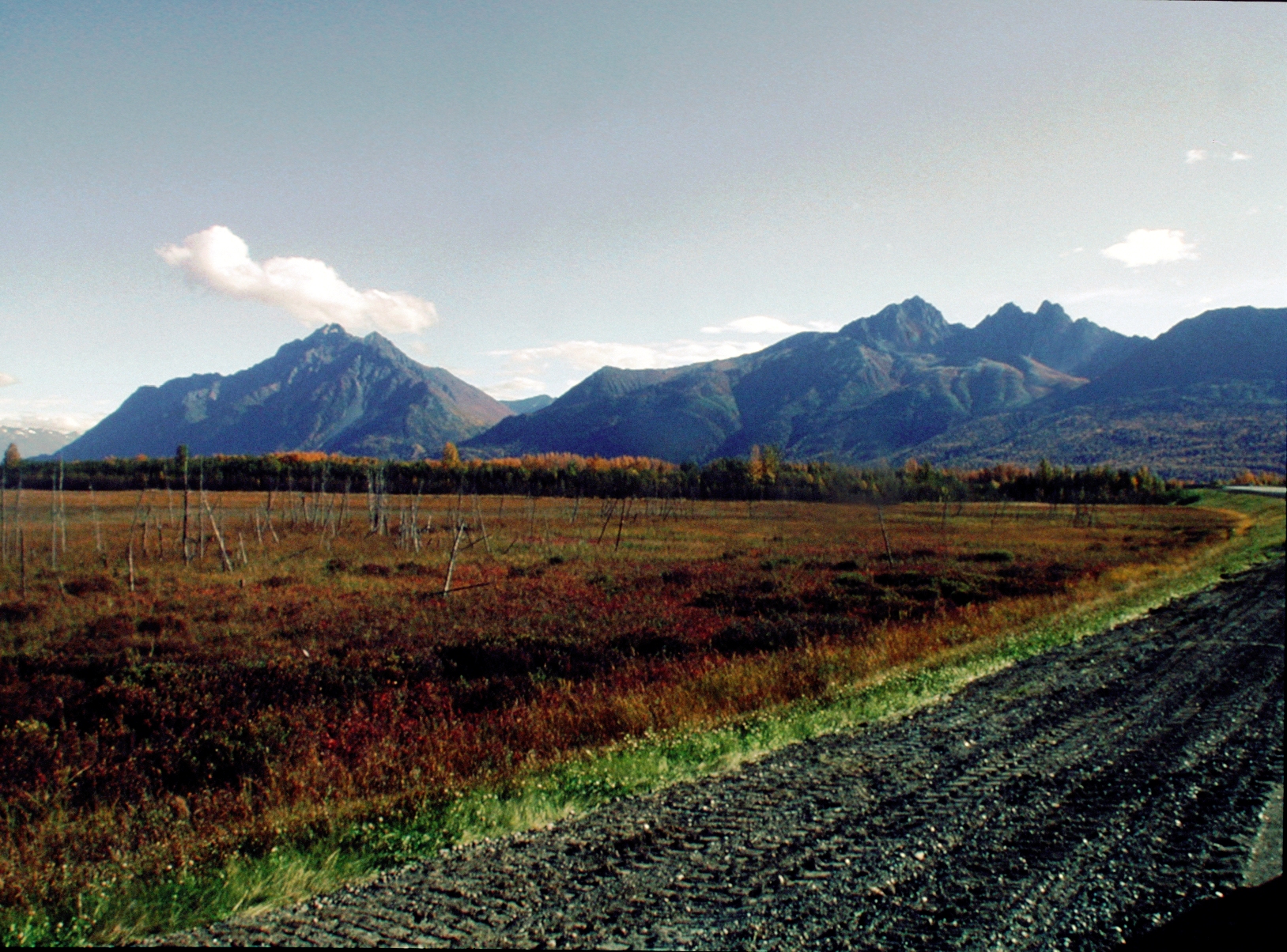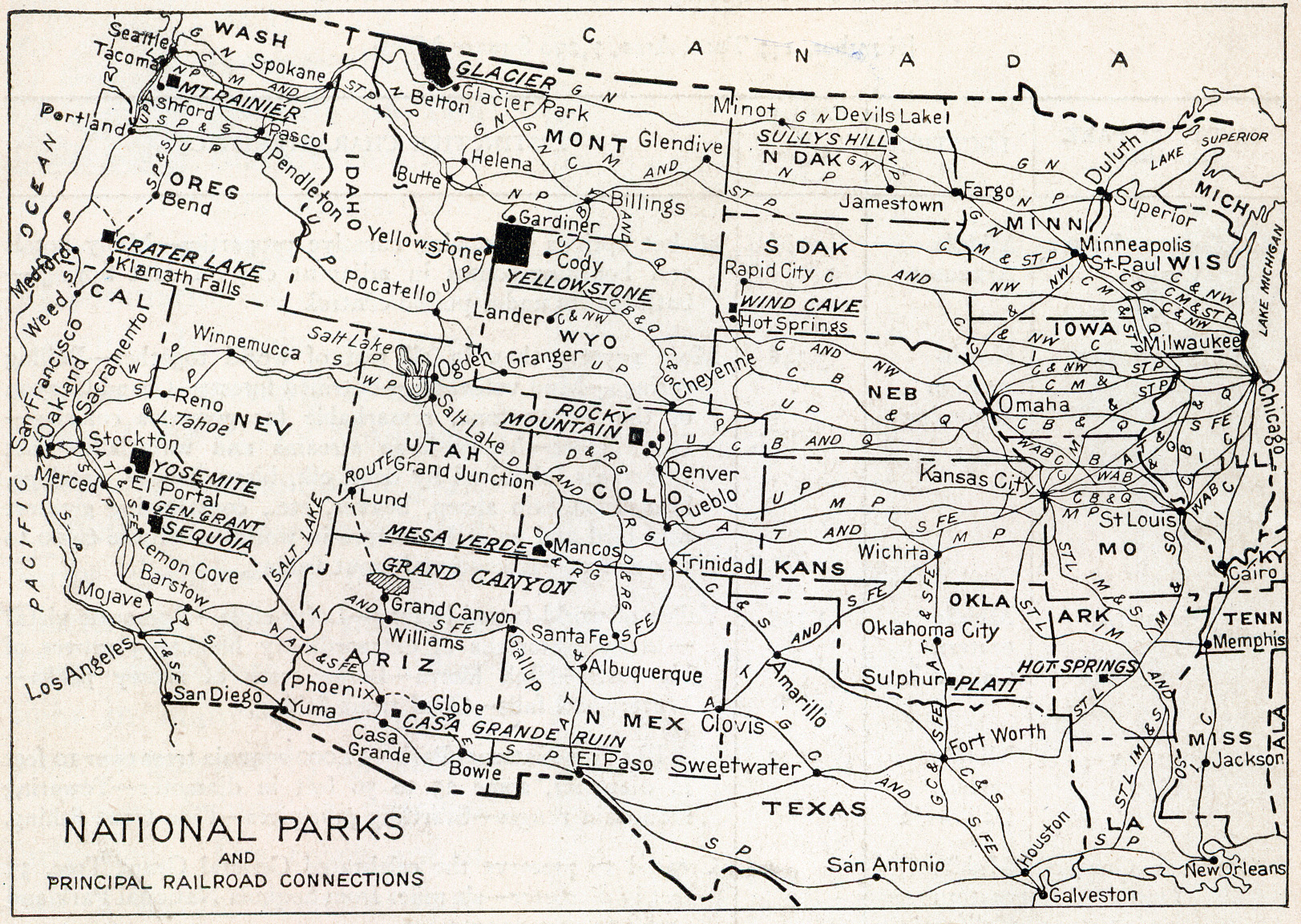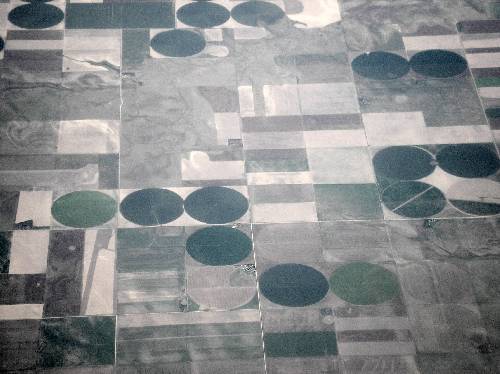|
Patten Colony Farm
The Patten Colony Farm is a historic farm property in Palmer, Alaska. It is located near milepost 39.9 on the Glenn Highway, and is a relatively complete instance of a farmstead established in the 1930s as part of the Matanuska Valley Colony initiative. The complex consists of eight buildings, six of which were built in the 1930s. The main house is an L-shaped log structure with a concrete foundation, a rarity in the colony. Smaller outbuildings include a log outhouse, a chicken house, and two barns, one of which is the only surviving horse barn (out of two built) of the colony. With . The property was listed on the National Register of Historic Places in 1991. See also *National Register of Historic Places listings in Matanuska-Susitna Borough, Alaska This is a list of the National Register of Historic Places listings in Matanuska-Susitna Borough, Alaska. This is intended to be a complete list of the properties and districts on the National Register of Historic Places i ... [...More Info...] [...Related Items...] OR: [Wikipedia] [Google] [Baidu] |
Glenn Highway
The Glenn Highway (part of Alaska Route 1) is a highway in the U.S. state of Alaska, extending from Anchorage near Merrill Field to Glennallen on the Richardson Highway. The Tok Cut-Off is often considered part of the Glenn Highway, for a total length of . Route description The longest stretch of freeway in Alaska runs mostly along the Glenn Highway, beginning in north Anchorage, continuing onto the Parks Highway at the interchange of the two roads, and ending in the city limits of Wasilla, for a total of approximately 38 miles (61 km). This portion of the Glenn Highway is the only road access to Anchorage for most of the state (with the exception of the Kenai Peninsula on the Seward Highway), and as such is the main traffic corridor for Anchorage's suburbs in the Chugiak-Eagle River and Mat-Su areas. The highest point on the highway is at ''Eureka Summit'', which sits on the divide between the Chugach and Talkeetna mountain ranges. History The highway ori ... [...More Info...] [...Related Items...] OR: [Wikipedia] [Google] [Baidu] |
Palmer, Alaska
Palmer (Ahtna: ''Nił'etse'it'aade'' or ''Nuutah''; Dena'ina: ''Denal'i Kena'') is a city in and the borough seat of the Matanuska-Susitna Borough, Alaska, United States, located northeast of Anchorage on the Glenn Highway in the Matanuska Valley. It is the ninth-largest city in Alaska, and forms part of the Anchorage Metropolitan Statistical Area. As of the 2020 census, the population of the city is 5,888, down from 5,937 in 2010. Palmer hosts the annual Alaska State Fair, and is also the headquarters of the National Tsunami Warning Center. History The first people to live in the Matanuska Valley, where Palmer is located, were the Dena'ina and Ahtna Athabaskans. They moved throughout the area, living a subsistence lifestyle and trading with other native groups. Their trade routes were along the Matanuska River. Russians came to Alaska in 1741 and brought the Russian Orthodox religious tradition to the indigenous peoples of the region. In the early 1890s, an entre ... [...More Info...] [...Related Items...] OR: [Wikipedia] [Google] [Baidu] |
David Williams (Alaska Architect)
David Williams was an American architect and community planner. He worked in the Washington, D.C. office of Federal Emergency Relief Administration (FERA). Early in his professional career he worked in Tampico, Mexico for Gulf Oil as a civil engineer. He designed a building for prefabrication that was widely used by Gulf and other oil companies. In 1935, he met with President Franklin D. Roosevelt, who was "fascinated" with David's ideas. A number of his works are listed on the U.S. National Register of Historic Places. Works include: * Berry House, 5805 N. Farm Loop Rd., Palmer, Alaska (Williams, David), NRHP-listed *Bailey Colony Farm, 3150 N. Glenn Hwy., Palmer, Alaska (Williams, David), NRHP-listed * Herried House, 4400 N. Palmer-Fishook Hwy., Palmer, Alaska (Williams, David), NRHP-listed *Matanuska Colony Community Center, roughly bounded by S. Colony, E. Firewood, S. Eklutua, E. Elmwood, S. Denali and a line N of properties on E. Dahlia, Palmer, Alaska (Williams, David ... [...More Info...] [...Related Items...] OR: [Wikipedia] [Google] [Baidu] |
Works Progress Administration
The Works Progress Administration (WPA; renamed in 1939 as the Work Projects Administration) was an American New Deal agency that employed millions of jobseekers (mostly men who were not formally educated) to carry out public works projects, including the construction of public buildings and roads. It was set up on May 6, 1935, by presidential order, as a key part of the Second New Deal. The WPA's first appropriation in 1935 was $4.9 billion (about $15 per person in the U.S., around 6.7 percent of the 1935 GDP). Headed by Harry Hopkins, the WPA supplied paid jobs to the unemployed during the Great Depression in the United States, while building up the public infrastructure of the US, such as parks, schools, and roads. Most of the jobs were in construction, building more than 620,000 miles (1,000,000 km) of streets and over 10,000 bridges, in addition to many airports and much housing. The largest single project of the WPA was the Tennessee Valley Authority. At its pea ... [...More Info...] [...Related Items...] OR: [Wikipedia] [Google] [Baidu] |
Matanuska Valley Colony
In 1935, the Federal Emergency Relief Administration created an experimental farming community known as the Matanuska Valley Colony as part of the New Deal resettlement plan. Situated in the Matanuska Valley, about 45 miles northeast of Anchorage, Alaska, the colony was settled by 203 families from Minnesota, Wisconsin and Michigan. The colony project cost about $5,000,000 and, after five years, over half of the original colonists had left the valley. By 1965, only 20 of the first families were still farming the valley. History The Matanuska Colony was part of Franklin D. Roosevelt's New Deal plan to help move the United States out of the Great Depression. It was one of many rural rehabilitation colonies to be established by the Federal Emergency Relief Administration (FERA). Others included Cherry Lake Farms in Florida, Dyess Colony in Arkansas, and the Pine Mountain Valley Rural Community in Georgia. In 1935, Americans in rural areas of northern states were among the worst ... [...More Info...] [...Related Items...] OR: [Wikipedia] [Google] [Baidu] |
National Park Service
The National Park Service (NPS) is an List of federal agencies in the United States, agency of the Federal government of the United States, United States federal government within the United States Department of the Interior, U.S. Department of the Interior that manages all List of areas in the United States National Park System, national parks, most National monument (United States), national monuments, and other natural, historical, and recreational properties with various title designations. The United States Congress, U.S. Congress created the agency on August 25, 1916, through the National Park Service Organic Act. It is headquartered in Washington, D.C., within the main headquarters of the Department of the Interior. The NPS employs approximately 20,000 people in 423 individual units covering over 85 million acres in List of states and territories of the United States, all 50 states, the Washington, D.C., District of Columbia, and Territories of the United States, US territ ... [...More Info...] [...Related Items...] OR: [Wikipedia] [Google] [Baidu] |
National Register Of Historic Places
The National Register of Historic Places (NRHP) is the United States federal government's official list of districts, sites, buildings, structures and objects deemed worthy of preservation for their historical significance or "great artistic value". A property listed in the National Register, or located within a National Register Historic District, may qualify for tax incentives derived from the total value of expenses incurred in preserving the property. The passage of the National Historic Preservation Act (NHPA) in 1966 established the National Register and the process for adding properties to it. Of the more than one and a half million properties on the National Register, 95,000 are listed individually. The remainder are contributing resources within historic districts. For most of its history, the National Register has been administered by the National Park Service (NPS), an agency within the U.S. Department of the Interior. Its goals are to help property owners a ... [...More Info...] [...Related Items...] OR: [Wikipedia] [Google] [Baidu] |
National Register Of Historic Places Listings In Matanuska-Susitna Borough, Alaska
This is a list of the National Register of Historic Places listings in Matanuska-Susitna Borough, Alaska. This is intended to be a complete list of the properties and districts on the National Register of Historic Places in Matanuska-Susitna Borough, Alaska, United States. The locations of National Register properties and districts for which the latitude and longitude coordinates are included below, may be seen in an online map. There are 30 properties and districts listed on the National Register in the borough. Current listings See also * List of National Historic Landmarks in Alaska The National Historic Landmarks in Alaska represent Alaska's history from its Russian heritage to its statehood. There are 50 National Historic Landmarks (NHLs) in the state. The United States National Historic Landmark program is operated under ... * National Register of Historic Places listings in Alaska References {{Matanuska-Susitna Borough, ... [...More Info...] [...Related Items...] OR: [Wikipedia] [Google] [Baidu] |
Farms On The National Register Of Historic Places In Alaska
A farm (also called an agricultural holding) is an area of land that is devoted primarily to agricultural processes with the primary objective of producing food and other crops; it is the basic facility in food production. The name is used for specialized units such as arable farms, vegetable farms, fruit farms, dairy, pig and poultry farms, and land used for the production of natural fiber, biofuel and other commodities. It includes ranches, feedlots, orchards, plantations and estates, smallholdings and hobby farms, and includes the farmhouse and agricultural buildings as well as the land. In modern times the term has been extended so as to include such industrial operations as wind farms and fish farms, both of which can operate on land or sea. There are about 570 million farms in the world, most of which are small and family-operated. Small farms with a land area of fewer than 2 hectares operate about 1% of the world's agricultural land, and family farms comprise about 7 ... [...More Info...] [...Related Items...] OR: [Wikipedia] [Google] [Baidu] |
Buildings And Structures Completed In 1940
A building, or edifice, is an enclosed structure with a roof and walls standing more or less permanently in one place, such as a house or factory (although there's also portable buildings). Buildings come in a variety of sizes, shapes, and functions, and have been adapted throughout history for a wide number of factors, from building materials available, to weather conditions, land prices, ground conditions, specific uses, prestige, and aesthetic reasons. To better understand the term ''building'' compare the list of nonbuilding structures. Buildings serve several societal needs – primarily as shelter from weather, security, living space, privacy, to store belongings, and to comfortably live and work. A building as a shelter represents a physical division of the human habitat (a place of comfort and safety) and the ''outside'' (a place that at times may be harsh and harmful). Ever since the first cave paintings, buildings have also become objects or canvasses of much art ... [...More Info...] [...Related Items...] OR: [Wikipedia] [Google] [Baidu] |
Buildings And Structures In Matanuska-Susitna Borough, Alaska
A building, or edifice, is an enclosed structure with a roof and walls standing more or less permanently in one place, such as a house or factory (although there's also portable buildings). Buildings come in a variety of sizes, shapes, and functions, and have been adapted throughout history for a wide number of factors, from building materials available, to weather conditions, land prices, ground conditions, specific uses, prestige, and aesthetic reasons. To better understand the term ''building'' compare the list of nonbuilding structures. Buildings serve several societal needs – primarily as shelter from weather, security, living space, privacy, to store belongings, and to comfortably live and work. A building as a shelter represents a physical division of the human habitat (a place of comfort and safety) and the ''outside'' (a place that at times may be harsh and harmful). Ever since the first cave paintings, buildings have also become objects or canvasses of much artist ... [...More Info...] [...Related Items...] OR: [Wikipedia] [Google] [Baidu] |
Historic Districts On The National Register Of Historic Places In Alaska
History (derived ) is the systematic study and the documentation of the human activity. The time period of event before the invention of writing systems is considered prehistory. "History" is an umbrella term comprising past events as well as the memory, discovery, collection, organization, presentation, and interpretation of these events. Historians seek knowledge of the past using historical sources such as written documents, oral accounts, art and material artifacts, and ecological markers. History is not complete and still has debatable mysteries. History is also an academic discipline which uses narrative to describe, examine, question, and analyze past events, and investigate their patterns of cause and effect. Historians often debate which narrative best explains an event, as well as the significance of different causes and effects. Historians also debate the nature of history as an end in itself, as well as its usefulness to give perspective on the problems of the p ... [...More Info...] [...Related Items...] OR: [Wikipedia] [Google] [Baidu] |








.jpg)